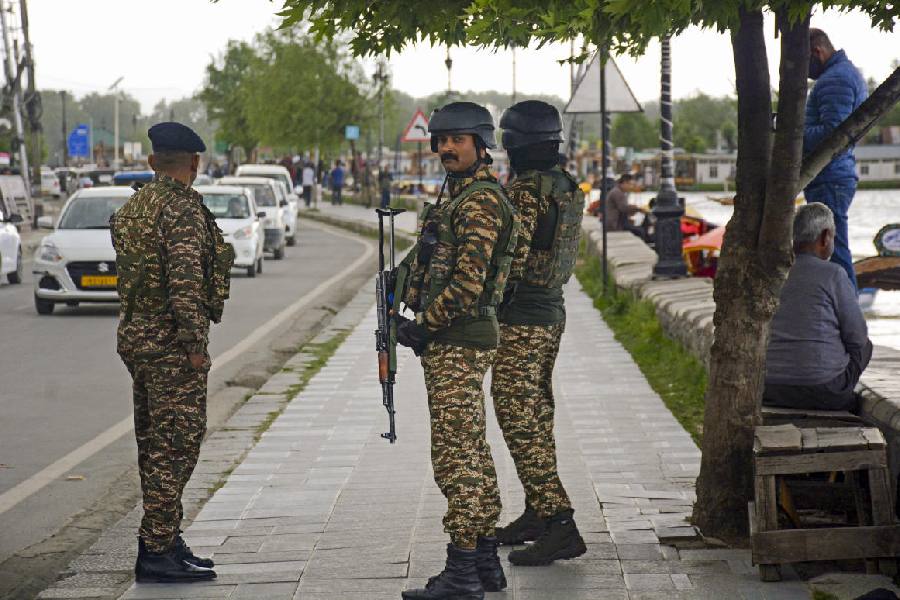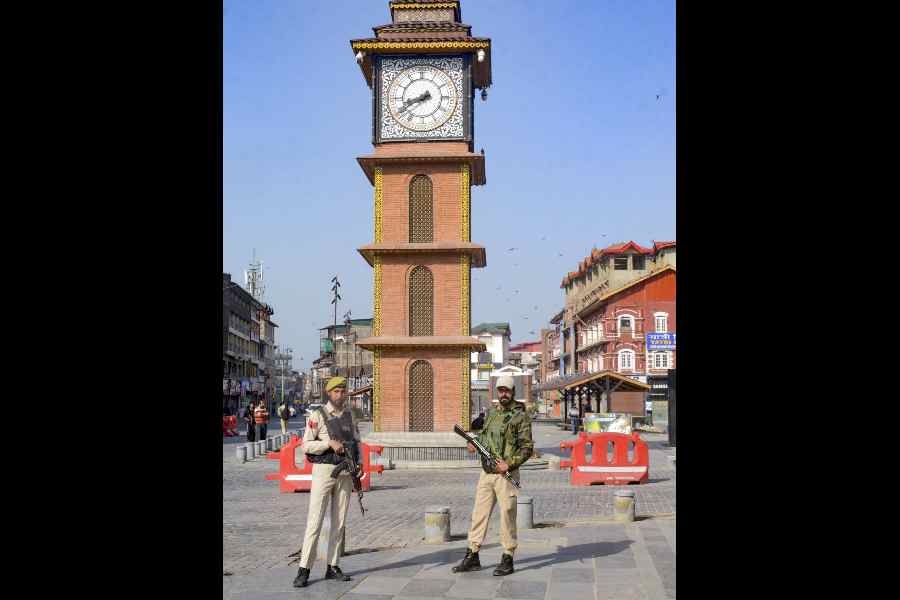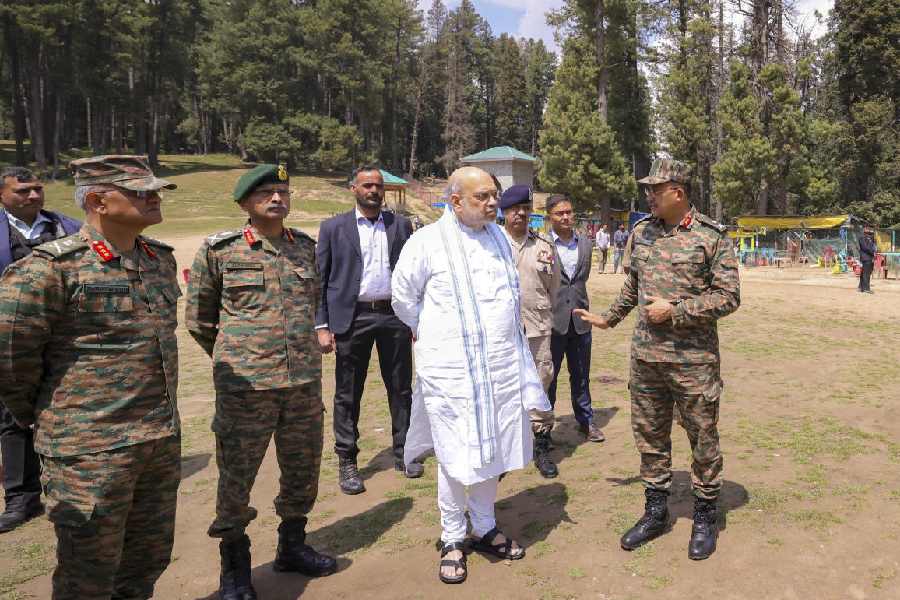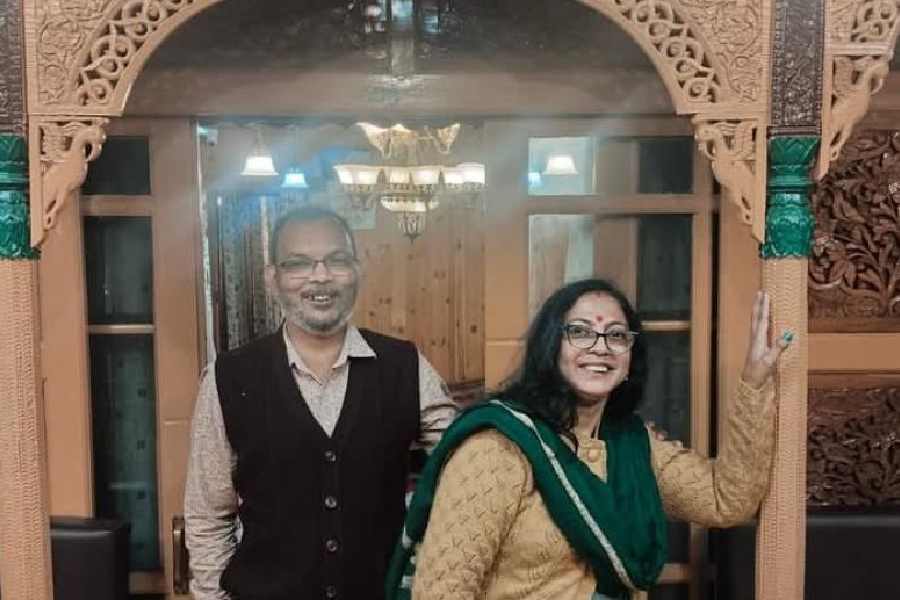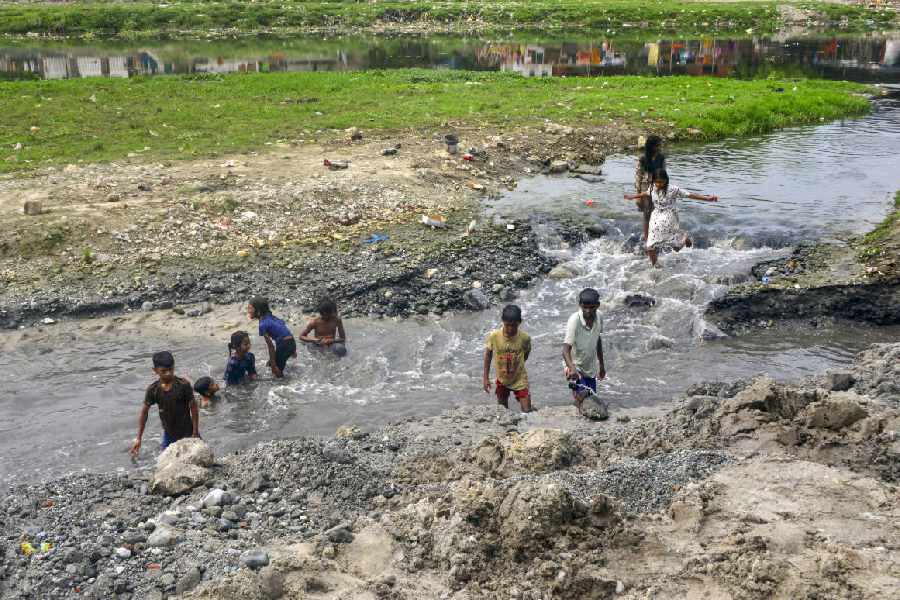
Namsai (Arunachal Pradesh), Oct. 22: His hands trembled but his deft skills did not waver as the octogenarian went about meticulously performing a nearly two centuries-old ritual.
Nigru Singwa Maio cuts down on what is usually a lengthy process to make phalap, the handmade tea of Singphos, a skill handed down through generations.
He regaled his small audience, a mainly women's delegation from South Korea, with anecdotes, like how his ancestors would mount elephants to pluck tea leaves. "Tea plants were very tall those days," he explained.
Maio, from Piyong village in Namsai district of Arunachal Pradesh, is the chief of the Nigru clan and the descendant of Ningroola, the chief credited with undertaking tea cultivation in Assam on behalf of the British.
"Making phalap is as important as paddy cultivation to us. It is a tradition we cannot allow to die," a proud Maio told the visitors who, despite the language barrier, seemed to hang on to his every word while their eyes followed his each move.
The South Korean delegation has come to study Indian tea and its origin.
Tea experts say that if it was Bisa Gam, the Singpho chief of Bisa clan who is credited with the discovery of tea in Assam in 1823, it was Ningroola who undertook the first tea cultivation by a native on behalf of the British.
Ningroola's assistance was first sought by the British for locating wild tea-growing areas in the vast forests of Assam. He was prevailed upon to cultivate tea and he consented to the plan provided the government helped. The British helped Ningroola with men, money and expertise, and he brought extensive areas under tea plantation. His produce amounting to £480 was first sold in the Calcutta market in 1840.
It is believed that Ningroola also manufactured some tea out of the 35 chests manufactured by the Singpho chiefs among the 130 chests (total produce in 1840) during the first tea auction by the East India Company (EIC) in Calcutta in March 1841.
While the Bisa clan continued to stay in and around Margherita in Tinsukia district of Upper Assam, the Ningroola clan shifted to neighbouring Namsai in Arunachal Pradesh.
There are nearly 15 Singhpo families concentrated in Piyong village in Namsai who are still keeping the tradition of making phalap alive. A few though have taken to making modern tea commercially.
"Most of our people are dependent on agriculture and almost all of them have a few tea bushes in their gardens to prepare phalap," Maio said.
Pradip Baruah, a senior scientist at Tocklai Tea Research Institute in Jorhat, who accompanied the Korean delegation told The Telegraph that Ningroola had his territory by the side of the Buri Dihing river on the foothills of the Patkai range near Margherita but shifted to Namsai later.
"He is credited with taking up tea cultivation in Assam on behalf of the British," said Baruah, who has done extensive research on the history of Assam tea. Maniram Dewan was the first Indian commercial tea planter, he added.
Though historians do not regard Ningroola (Ningru La) as an independent tea planter as he worked in collaboration with the EIC, his cultivation is regarded as the beginning of the tea industry in Assam.
Baruah said the Singphos have been drinking phalap since time immemorial and soon after discovery of tea in Singpho territory in Upper Assam, the British gave financial assistance to Ningroola and other chiefs for its cultivation.
C.K. Chung, director of Korean International Tea Research Institute, who headed the delegation, said he was impressed with how the Singphos made tea but said Indian authorities have not done much to popularise such a unique ritual.
"We are impressed and would like to do our bit to help popularise Singpho tea and the age-old ritual behind it," he said.


